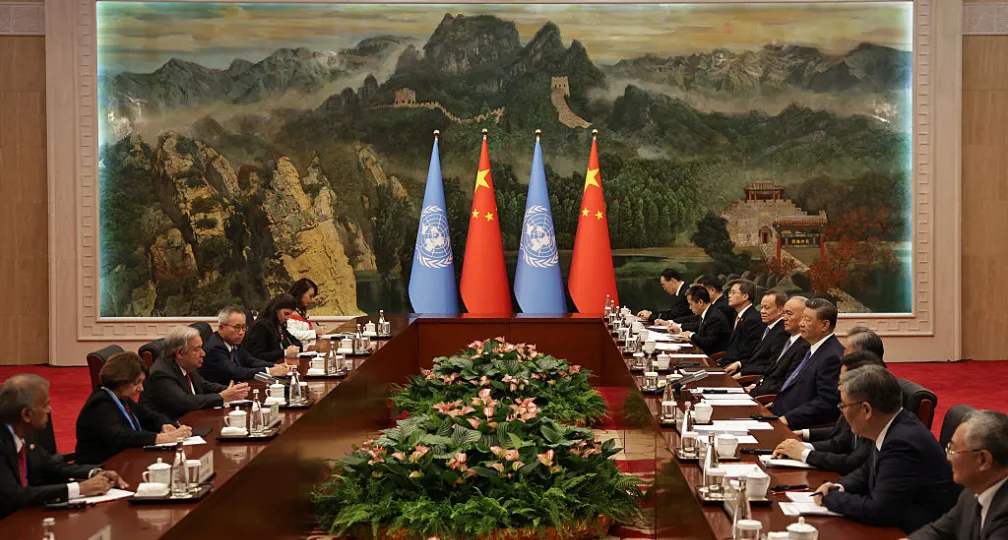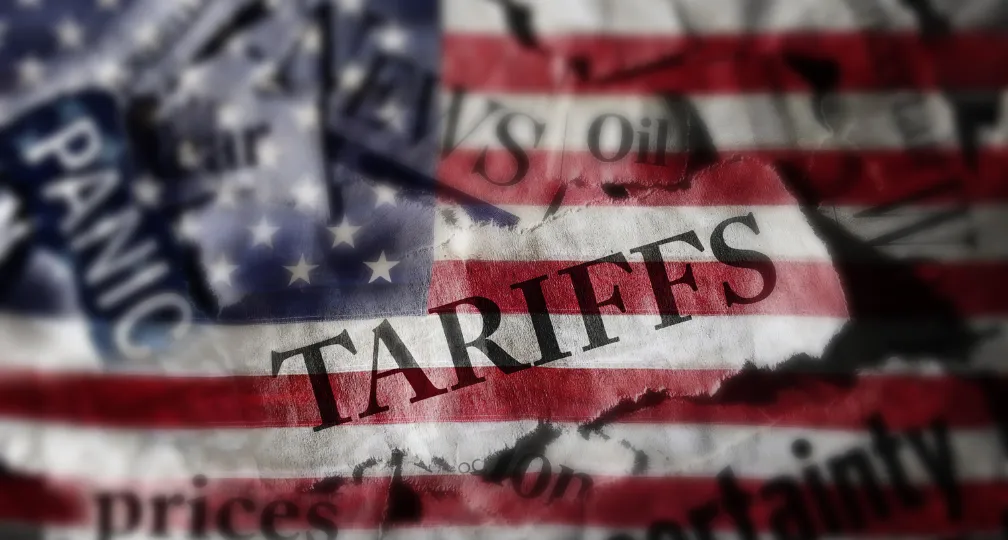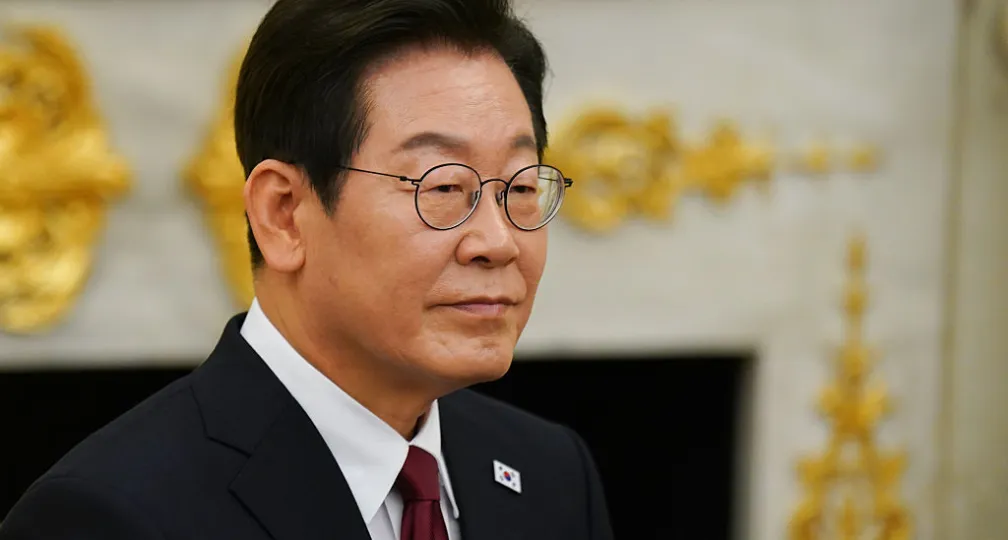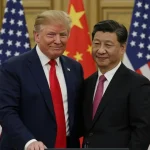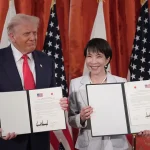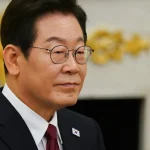Trade, capital flows, and the new focus on “global imbalances”

The latest regulatory developments on economic security & geoeconomics
By Paul Nadeau, Visiting Research Fellow, Institute of Geoeconomics (IOG)
Nippon Steel “Partnership” with U.S. Steel?: On May 24, Donald Trump announced a “partnership” between Nippon Steel and U.S. Steel after Nippon Steel’s acquisition of U.S. Steel was blocked by former president Joe Biden earlier this year. In a post on the Truth Social media network, Trump wrote “I am proud to announce that, after much consideration and negotiation, U.S. Steel will REMAIN in America, and keep its Headquarters in the Great City of Pittsburgh…This will be a planned partnership between United States Steel and Nippon Steel, which will create at least 70,000 jobs, and add $$14 Billion to the U.S. Economy”. Neither Trump nor the White House provided further details on the structure of the apparent partnership, only adding later that “It will be controlled by the United States, otherwise I wouldn’t make the deal”.
Trump Announces, then Pauses EU Tariffs: Donald Trump appeared to offer a reprieve to the 50 percent tariffs on the European Union that he announced on May 23, and which were due to be imposed on June 1. Following a May 25 phone call with European Commission President Ursula von der Leyen, Trump announced that the tariffs would be delayed until July 9 to give both parties an opportunity to reach a deal.
Trump Middle East Deal Secures Tech Collaboration: Donald Trump’s trip to the Middle East secured commitments from regional states to purchase significant quantities of advanced chips from U.S. manufacturers. Nvidia will sell an initial 18,000 of its newest chips to Humain, an AI startup launched by Saudi Arabia’s sovereign wealth fund, while Advanced Micro Devices announced a $10 billion collaboration deal with Humain, and Qualcomm signed a memorandum of understanding (MOU) with Humain to develop a data center central processor. Meanwhile, Saudi Arabian firm DataVolt will invest $20 billion in AI data centers and energy infrastructure in the United States, and Google, DataVolt, Oracle, Salesforce Inc, Advanced Micro Devices, and Uber will make $80 billion in new investments in both Saudi Arabia and the United States. The United Arab Emirates (UAE) made a similar set of deals totaling $200 billion, including an agreement to construct the largest AI campus outside the United States. The agreements are notable since they are the first deals reached since the Trump administration rescinded a Biden administration rule that restricted the overseas sale of advanced chips. The Trump administration has announced that a new rule would be drafted but has not yet released details.
China Announces Anti-Dumping Duties on Plastics Imports: On May 18, China imposed anti-dumping duties on imports of POM copolymers from the European Union, Japan, Taiwan, and the United States following an investigation that started in May 2024. The highest duties were imposed on imports from the United States at 74.9 percent while European imports received duties of 34.5 percent.
U.S. Announces New Iran Sanctions: In the latest series of actions targeting Iran and its nuclear and missile programs, the U.S. Treasury Department sanctioned six individuals and 12 entities for their efforts to help Iran domestically source critical materials needed for the country’s ballistic missile program, sanctioned almost two dozen firms in multiple jurisdictions for facilitating Iran’s illicit oil trade, and the U.S. Department of State sanctioned three Iranian nationals and one Iranian entity for their “involvement in activities that contribute to the proliferation of weapons of mass destruction”.
Analysis: Trade, capital flows, and the new focus on “global imbalances”
By Andrew Capistrano, Visiting Research Fellow, Institute of Geoeconomics (IOG)
When the G7 finance ministers and central bank governors met in Canada this month, they issued a communiqué that was noteworthy both for the new language it contained as well as for what was conspicuously omitted. Despite the economic turmoil following President Trump’s “Liberation Day” trade disruption, the word “tariff” does not appear in the document once. In contrast, there were three references to global macroeconomic “imbalances” on the first page—qualified as “unsustainable” and “excessive” imbalances—reflecting an increasingly prominent view of international trade flows in Washington that appears to be gaining currency among other members of the G7.
China was not mentioned by name as the source of these imbalances, but the use of this language almost certainly alludes to its persistent trade surpluses. It is no secret that G7 nations are deeply concerned about Chinese industrial overcapacity being exported to the world. And if Trump’s tariffs force China to divert exports from the US market to other advanced economies, Canada, Europe, and Japan are justifiably worried that they will be forced to absorb them.
That is why the communiqué’s reference to “imbalances” was interesting. Trump administration economic officials have often framed the US-China trade conflict as centered on the need to “rebalance” the bilateral trade relationship so as to increase the US manufacturing share of GDP. Consider how Treasury Secretary Scott Bessent frequently calls the Chinese economy the “most imbalanced in history”, and cites its overproduction and low domestic consumption as the mirror image of high US consumption and diminished industrial production. Thus in his “ideal” scenario, the US-China rebalancing would be “win-win”: solving both nations’ internal imbalances with a deal that rectifies the external imbalances.
If Bessent has managed to convince his G7 counterparts of this perspective, it suggests that a more nuanced view of the international trading system’s structure could be going mainstream.
However, there is more to “global imbalances” than trade flows alone, and it is not clear if the G7 is on board for the fuller implications of this macroeconomic view. On the surface, global imbalances appear to be about countries that export more than they import, subsidize production, or distort supply chains. But this is only half the picture. For every current account deficit, there is a corresponding capital account surplus (i.e., the balance of payments). In the US case, dollars sent abroad to pay for imports inevitably return—not only to buy American goods and services, but more often to purchase US assets such as stocks and Treasury bonds.
These capital inflows create a self-reinforcing cycle that sustains current account imbalances. Foreign demand for dollar-denominated assets props up the dollar’s value, making US exports less competitive and worsening the trade deficit. In other words, the US does not run trade deficits simply because it consumes too much, but also because other economies produce far more than they consume, and then park the dollars earned in US financial instruments instead of creating demand for US exports.
Viewed this way, China is not the only US trading partner driving imbalances; the US also has capital account surpluses with the other G7 nations. And it seems unlikely that such capital flows are the “imbalances” they had in mind when issuing the communiqué.
Thus it is important to understand the implications of Trump’s economic policy advisors explicitly linking the US current account deficit to its capital account surplus, since the President may find their narrative compelling. The key point is that because these trade deficits are sustained by the US financial system, which absorbs surplus global production via bond issuance, the next step in Trump’s quest to rebalance trade may be disrupting global capital flows.
There are political reasons for this as well. One hopes that the administration learned from the “Liberation Day” episode that tariffs on all US trading partners will increase consumer prices, lead to empty shelves, and trigger higher input costs for the domestic manufacturers it seeks to boost. However, the risk is the lesson learned might actually be that it is more expedient to shift the costs of any rebalancing away from domestic consumers and toward foreign holders of US assets, who cannot vote in US elections.
Another political motive stems from a third imbalance that affects capital flows in a subtle but critical way: the persistent US fiscal deficit, and the pressure to reduce it. According to the “global imbalances” view of macroeconomics, deficit spending cannot be separated from trade and capital flows. Year after year, Washington borrows to finance the government, and foreign central banks and asset managers buy the resulting debt, a dynamic that maintains the capital account surplus and thus helps drive the trade deficit. It also keeps US interest rates lower than they otherwise would be, disincentivizing domestic savings and encouraging ever-larger fiscal deficits—a vicious circle that connects the Trump administration’s domestic and international economic agendas.
For this reason, an effort to achieve Trump’s trade and deficit objectives by targeting capital flows cannot be discounted. The Republican-led House recently passed the “Big Beautiful Bill” that aims to advance Trump’s border, tax, and defense policies, sending it to the Senate for further debate, but several “deficit hawk” Republicans have raised concerns about insufficient spending cuts. While the bill’s supporters have countered that it will unleash growth through tax cuts and deregulation, increased revenues would be another route to reduce its effect on the deficit to GDP percentage.
Bessent and Council of Economic Advisers Chair Stephen Miran have therefore hinted that if the US is serious about correcting global imbalances, it cannot focus solely on trade or industrial policy. It must also address the structural demand for US financial assets that sustains the status quo. That requires changes to how the US government spends, but also how it taxes foreign capital and manages financial flows.
Among the most consequential proposals is a potential repeal of the Portfolio Interest Exemption (PIE), a 1984 provision that allows foreign investors to earn interest on US bonds tax-free. Repealing PIE would reimpose a 30% withholding tax on that income, unless a bilateral treaty applies.
This move is framed not as a capital control but as “reciprocity”—taxing foreign holders of US debt the way US investors are taxed abroad—since the US is the only large economy that gives foreign investors such a tax advantage.
The “Big Beautiful Bill” also includes a new tax code, Section 899, which introduces a 5% surtax on US income earned by entities from countries that impose discriminatory taxes on American firms. This provision would give the Treasury a tool to selectively raise taxes on adversaries without breaching existing treaty commitments. Allies with tax agreements would remain shielded, while non-cooperative jurisdictions would face higher costs for accessing US capital markets.
These tax reforms are part of a broader attempt to shift the burden of adjustment away from US workers and toward the capital inflows that have distorted global trade. Bessent, Miran, and other key Trump advisors believe that by changing the incentives that drive foreign accumulation of dollar assets, the US can encourage surplus economies to invest more into their own domestic consumption—and thereby push the global system toward a more balanced equilibrium.
One concern raised by market participants is that taxing foreign bondholders could trigger a selloff of Treasuries, driving up yields and thus US borrowing costs. An additional signal that capital flows may soon be targeted is that there are indications the administration is preparing complementary measures to absorb any resulting dislocation. Chief among them is reform to the Supplemental Leverage Ratio (SLR), a regulatory constraint that currently penalizes US banks for holding Treasuries. By relaxing SLR requirements, regulators can allow domestic banks to step in and absorb the excess supply of Treasuries if foreign holders begin to divest. According to recent interviews with Bessent, such reforms could be announced as early as this summer.
In parallel, the GENIUS Act—the first major piece of US cryptocurrency legislation, which passed a key procedural vote in the Senate on 19 May—promotes the issuance of stablecoins backed by US Treasuries. The aim is to expand global demand for dollar-denominated assets in digital form, particularly in emerging markets and through digital channels. In other words, while the administration seeks to tax large, concentrated capital inflows from surplus countries, it is also building new, diversified channels for stable demand, preferably from consumers, not sovereigns.
If executed well (a big if), these strategies would reinforce each other. A modest rise in Treasury yields from a selloff by foreigners and reduced overseas demand would be offset by higher domestic and digital demand. Over time, as capital flows reconfigure, the US economy would rebalance: less reliant on imported capital to finance deficit spending, more focused on domestic investment, and gradually more export-competitive.
Importantly, the ultimate objective is not to punish foreign investors or “weaponize” the dollar per se, but to restore the currency’s proper macroeconomic function. For decades, the US has run persistent trade deficits while the dollar strengthened—a paradox that defies economic theory. According to the “global imbalances” view, this is because other countries suppress currency adjustment by hoarding US financial assets, forcing the US into imbalanced consumption. From this standpoint, the administration does not see these policies as currency manipulation, but rather as a means to allow the dollar to fluctuate freely so trade can rebalance naturally.
Proponents would argue that this reframing of imbalances—from trade-focused to capital-driven—marks a return to fundamentals. While the postwar Bretton Woods system treated persistent surpluses and deficits as problems to be corrected, today they are treated as permanent features of globalization. The longer these imbalances are allowed to continue the more the adjustment burden falls on labor, wages, and production. All are key metrics for the “economic nationalist” and “pro-working class” worldview common in pro-Trump circles.
Whether the Trump administration is capable of executing policies to rebalance the US capital account that prove more sound and less disruptive than its “Liberation Day” attempt to rebalance the current account is far from certain. But the focus on unsustainable and excessive imbalances (rather than prices or market efficiency) is not necessarily misplaced. The current global trading system rewards countries that suppress consumption and subsidize production while penalizing open economies like the US that keep capital markets free and allow their currency to float. That is not a natural equilibrium; Miran would argue it is a system held in place by policy asymmetries.
The G7’s language on “excessive imbalances” signals a shift in how the global trading system is seen by advanced economies, but outside the US, extending the logic from Chinese exports to capital flows may be a bridge too far. What is emerging is a more assertive US approach to trade and finance based on a deeper recognition that the international system needs built-in correction mechanisms. Without them, the global economy will continue to drift—sustained by imbalances and vulnerable to shocks, increasingly from the US itself.
(Photo Credit: shutterstock)
Disclaimer: The views expressed in this IOG Economic Intelligence Report do not necessarily reflect those of the API, the Institute of Geoeconomics (IOG) or any other organizations to which the author belongs.
API/IOG English Newsletter
Edited by Paul Nadeau, the newsletter will monthly keep up to date on geoeconomic agenda, IOG Intelligencce report, geoeconomics briefings, IOG geoeconomic insights, new publications, events, research activities, media coverage, and more.



Visiting Research Fellow
Andrew Capistrano is Director of Research at PTB Global Advisors, a Washington DC-based geopolitical risk consulting firm. Specializing in economic competition between the US/EU and China, he analyzes how trade, national security, and industrial policies impact markets, and his firm’s clients include Japanese corporations and government agencies. He previously worked in Tokyo at the US Embassy’s American Center Japan and as a research associate at the Rebuild Japan Initiative Foundation / Asia-Pacific Initiative. Dr Capistrano holds a BA from the University of California, Berkeley; an MA in political science (international relations and political economy) from Waseda University; and a PhD in international history from the London School of Economics. His academic work focuses on the diplomatic history of East Asia from the mid-19th to the mid-20th centuries, applying game-theoretic concepts to show how China's economic treaties with the foreign powers created unique bargaining dynamics and cooperation problems. During his doctoral studies he was a research student affiliate at the Suntory and Toyota International Centres for Economics and Related Disciplines (STICERD) in London.
View Profile
Visiting Research Fellow
Paul Nadeau is an adjunct assistant professor at Temple University's Japan campus, co-founder & editor of Tokyo Review, and an adjunct fellow with the Scholl Chair in International Business at the Center for Strategic and International Studies (CSIS). He was previously a private secretary with the Japanese Diet and as a member of the foreign affairs and trade staff of Senator Olympia Snowe. He holds a B.A. from the George Washington University, an M.A. in law and diplomacy from the Fletcher School at Tufts University, and a PhD from the University of Tokyo's Graduate School of Public Policy. His research focuses on the intersection of domestic and international politics, with specific focuses on political partisanship and international trade policy. His commentary has appeared on BBC News, New York Times, Nikkei Asian Review, Japan Times, and more.
View Profile-
 India - Japan: The Glimpse of a Shared Vision2025.12.05
India - Japan: The Glimpse of a Shared Vision2025.12.05 -
 Beijing’s ‘Globalist’ Agenda Under Trump 2.02025.12.01
Beijing’s ‘Globalist’ Agenda Under Trump 2.02025.12.01 -
 Trump’s Tariffs Might Be Here to Stay – No Matter Who’s in Power2025.11.28
Trump’s Tariffs Might Be Here to Stay – No Matter Who’s in Power2025.11.28 -
 The long road to a South Korea-U.S. trade deal2025.11.26
The long road to a South Korea-U.S. trade deal2025.11.26 -
 Event Report: The Trump Tariffs and Their Impact on the Japanese Economy2025.11.25
Event Report: The Trump Tariffs and Their Impact on the Japanese Economy2025.11.25
 Event Report: The Trump Tariffs and Their Impact on the Japanese Economy2025.11.25
Event Report: The Trump Tariffs and Their Impact on the Japanese Economy2025.11.25 The Real Significance of Trump’s Asia Trip2025.11.14
The Real Significance of Trump’s Asia Trip2025.11.14 Can Takaichi Build on a Successful Summit?2025.10.31
Can Takaichi Build on a Successful Summit?2025.10.31 The long road to a South Korea-U.S. trade deal2025.11.26
The long road to a South Korea-U.S. trade deal2025.11.26 India’s Structural Reforms: Opportunities and Risks2025.11.14
India’s Structural Reforms: Opportunities and Risks2025.11.14



